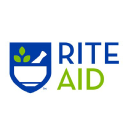/ factorpad.com / stocks / f55crh.html
An ad-free and cookie-free website.
Our quantitative data points are meant to provide a high-level understanding of factors in equity risk models for Rite Aid Corp. Portfolio managers use these models to forecast risk, optimize portfolios and review performance.
We show how RAD stock compares to 2,000+ US-based stocks, and to peers in the Retail Trade sector and Pharmacies and Drug Stores industry.
Please do not consider this data as investment advice. Data is downloaded from sources we deem reliable, but errors may occur.
 Rite Aid Corporation is on the front lines of delivering healthcare services and retail products to more than 1.6 million Americans daily. Our pharmacists are uniquely positioned to engage with customers and improve their health outcomes. The company provides an array of whole being health products and services for the entire family through over 2,400 retail pharmacy locations across 17 states. Through Elixir, we provide pharmacy benefits and services to approximately 4 million members nationwide.
Rite Aid Corporation is on the front lines of delivering healthcare services and retail products to more than 1.6 million Americans daily. Our pharmacists are uniquely positioned to engage with customers and improve their health outcomes. The company provides an array of whole being health products and services for the entire family through over 2,400 retail pharmacy locations across 17 states. Through Elixir, we provide pharmacy benefits and services to approximately 4 million members nationwide.
Many of the following risk metrics are standardized and transformed into quantitative factors in institutional-level risk models.
Rankings below represent percentiles from 1 to 100, with 1 being the lowest rating of risk.
Stocks with higher beta exhibit higher sensitivity to the ups and downs in the market. (↑↑)
Stocks with higher market capitalization often have lower risk. (↑↓)
Higher average daily dollar volume over the past 30 days implies lower liquidity risk. (↑↓)
Higher price momentum stocks, aka recent winners, equate to lower risk for many investors. (↑↓)
Style risk factors often include measures of profitability and payout levels.
Companies with higher earnings generally provide lower risk. (↑↓)
Companies with higher dividend yields, if sustaintable, are perceived to have lower risk. (↑↓)
/ factorpad.com / stocks / f55crh.html
A newly-updated free resource. Connect and refer a friend today.